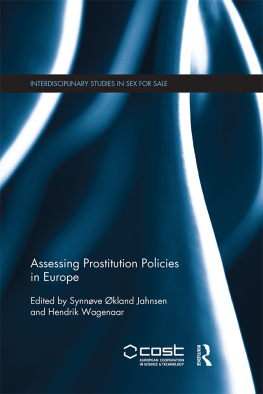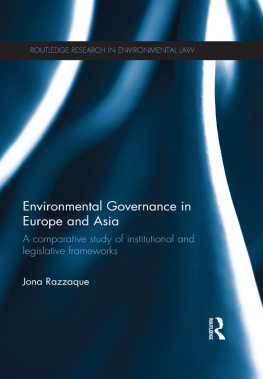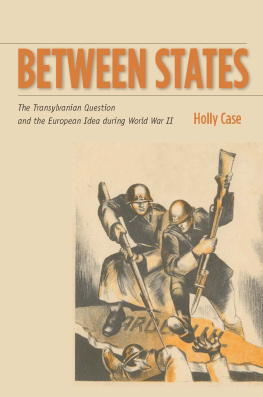Tax and Benefit Policies in the Enlarged Europe:
Assessing the Impact with Microsimulation Models
Public Policy and Social Welfare
A Series Edited by the European Centre
 European Centre Vienna
European Centre ViennaVolume 35
A substantive part of this book is based on research within the project Improving the Capacity and Usability of EUROMOD (I-CUE), Research Infrastructures Design Study 011859.
Orsolya Lelkes / Holly Sutherland (Eds.)
Tax and Benefit Policies in the Enlarged Europe: Assessing the Impact with Micro simulation Models
First published 2009 by Ashgate Publishing
Published 2017 by Routledge
2 Park Square, Milton Park, Abingdon, Oxon OX14 4RN
711 Third Avenue, New York, NY 10017, USA
Routledge is an imprint of the Taylor & Francis Group, an informa business
Copyright European Centre Vienna, 2009
All rights reserved. No part of this book may be reprinted or reproduced or utilised in any form or by any electronic, mechanical, or other means, now known or hereafter invented, including photocopying and recording, or in any information storage or retrieval system, without permission in writing from the publishers.
Notice:
Product or corporate names may be trademarks or registered trademarks, and are used only for identification and explanation without intent to infringe.
British Library Cataloguing-in-Publication Data. A catalogue record for this book is available from the British Library.
Copy-editing and DTP: Willem Stamatiou
European Centre for Social Welfare Policy and Research
Berggasse 17,1090 Vienna, Austria
ISBN 13: 978-0-7546-7848-9 (pbk)
The editors gratefully acknowledge funding for the project Improving the Capacity and Usability of EUROMOD (I-CUE) under Framework Programme 6 of the European Commission and the support of the Project Officer, Maria Theofilatou.
We are also indebted to the members of the project partner teams, who all contributed to the construction of the model or its enlargement to the New Member States: Michael Fuchs, Mattia Makovec (European Centre, Vienna), Lenin Ageer, Francesco Figari, Horacio Levy, Alari Paulus, Francesca Zantomio (University of Essex), Christine Lietz (IHS, Vienna), Daniela Mantovani (University of Modena), Andres Vrk (PRAXIS, Tallinn), Silja Kralik (Ministry of Environment, Tallinn), Pter Szivs, Pter Hegeds (TRKI, Budapest), Leszek Morawski (University of Warsaw), Boris Majcen, Mitja ok and Nataa Kump (IER, Ljubljana).
We also acknowledge the contributions of the other project collaborators, and the members of the EUROMOD User Group established as part of I-CUE: Olivier Bargain, Tim Callan, Andr Decoster, Herwig Immervoll, Manos Matsaganis, Cathal ODonoghue, Lucinda Platt, Panos Tsakloglou, Gerlinde Verbist and Heikki Viitamki.
We also thank the speakers and participants from 25 countries present at the final conference on 34 April 2008 in Vienna for a most lively and useful exchange of ideas.
Finally, the editors are grateful for the administrative support received from many people during the project, in particular Eileen Clucas, Lucy Brown and Judith Schreiber.
Country codes
BE | Belgium |
BG | Bulgaria |
CZ | Czech Republic |
DK | Denmark |
DE | Germany |
EE | Estonia IE Ireland |
EL | Greece |
ES | Spain |
FR | France IT Italy |
CY | Cyprus |
LV | Latvia |
LT | Lithuania |
LU | Luxembourg |
HU | Hungary |
MT | Malta |
NL | Netherlands |
AT | Austria |
PL | Poland |
PT | Portugal |
RO | Romania SI Slovenia |
SK | Slovakia FI Finland |
SE | Sweden |
UK | United Kingdom |
Country groupings
EU10: | New member states of the EU as from 1 May 2004: CY, CZ, EE, HU, LT, LV, MT, PL, SK, SI |
EU15: | EU member states prior to the accession of ten candidate countries on 1 May 2004: AT, BE, DK, ES, FI, FR, DE, EL, IE, IT, LU, NL, PT, SE, UK |
EU25: | EU15 plus EU10 |
EU27: | European Union as of 1 January 2007: see the list of country codes above. |
Contents
Orsolya Lelkes / Holly Sutherland
Sir Anthony B. Atkinson
Holly Sutherland
Alari Paulus / Mitja Cok / Francesco Figari / Peter Hegedils / Silja Kralik / Natasa Kump / Orsolya Lelkes I Horacio Levy / Christine Lietz / Daniela Mantovani I Leszek Morawski / Holly Sutherland / Peter Szivds / Andres Vork
Alari Paulus / Orsolya Lelkes / Mitja Cok / Natasa Kump / Peter Hegedus / Andres Vork / Peter Szivds I Silja Kralik
Horatio Levy / Leszek Morawski / Michal Myck
Lina Salanauskaite / Gerlinde Verbist
Panos Pashardes I Alexandros Polycarpou
Herwig Immervoll I Orsolya Lelkes
Figures
Chapter 1: Introduction
Chapter 2: An Enlarged Role for Tax-benefit Models
Chapter 3: Euromod: Past, Present and Future
Chapter 4: The Effects of Taxes and Benefits on Income Distribution in the Enlarged EU
Chapter 5: Flat Tax Reform in Eastern Europe
Chapter 6: Alternative Tax-benefit Strategies to Support Children in Poland
Chapter 7: Reforming Child Allowances in Lithuania
Tables
Chapter 2: An Enlarged Role for Tax-benefit Models
Chapter 4: The Effects of Taxes and Benefits on Income Distribution in the Enlarged EU
Chapter 5; Flat Tax Reform in Eastern Europe
Chapter 6: Alternative Tax-benefit Strategies to Support Children in Poland
Chapter 7: Reforming Child Allowances in Lithuania
Chapter 8: Tax-Free Income vs. In-Work Tax Allowances
Chapter 9: Looking Ahead: What Priorities for Tax-benefit Modelling?
Boxes
Orsolya Lelkes / Holly Sutherland
Ten countries joined the European Union in 2004 and two more in 2007. They added greatly to the diversity of the enlarged EU in terms of income levels, as illustrated in Figure 1.1. GDP per capita in Bulgaria and Romania in 2007 was only 4045% of the EU-27 average, even when adjusted for price differences across countries. Slovenia and Cyprus had the highest level of incomes of the New Member States, close to the EU average and the level of Greece. The relative levels of GDP, however, are not the whole story. Households are directly affected by the level and changes of their incomes, rather than that of the GDP, which has other components as well (e.g. profits).1











 European Centre Vienna
European Centre Vienna